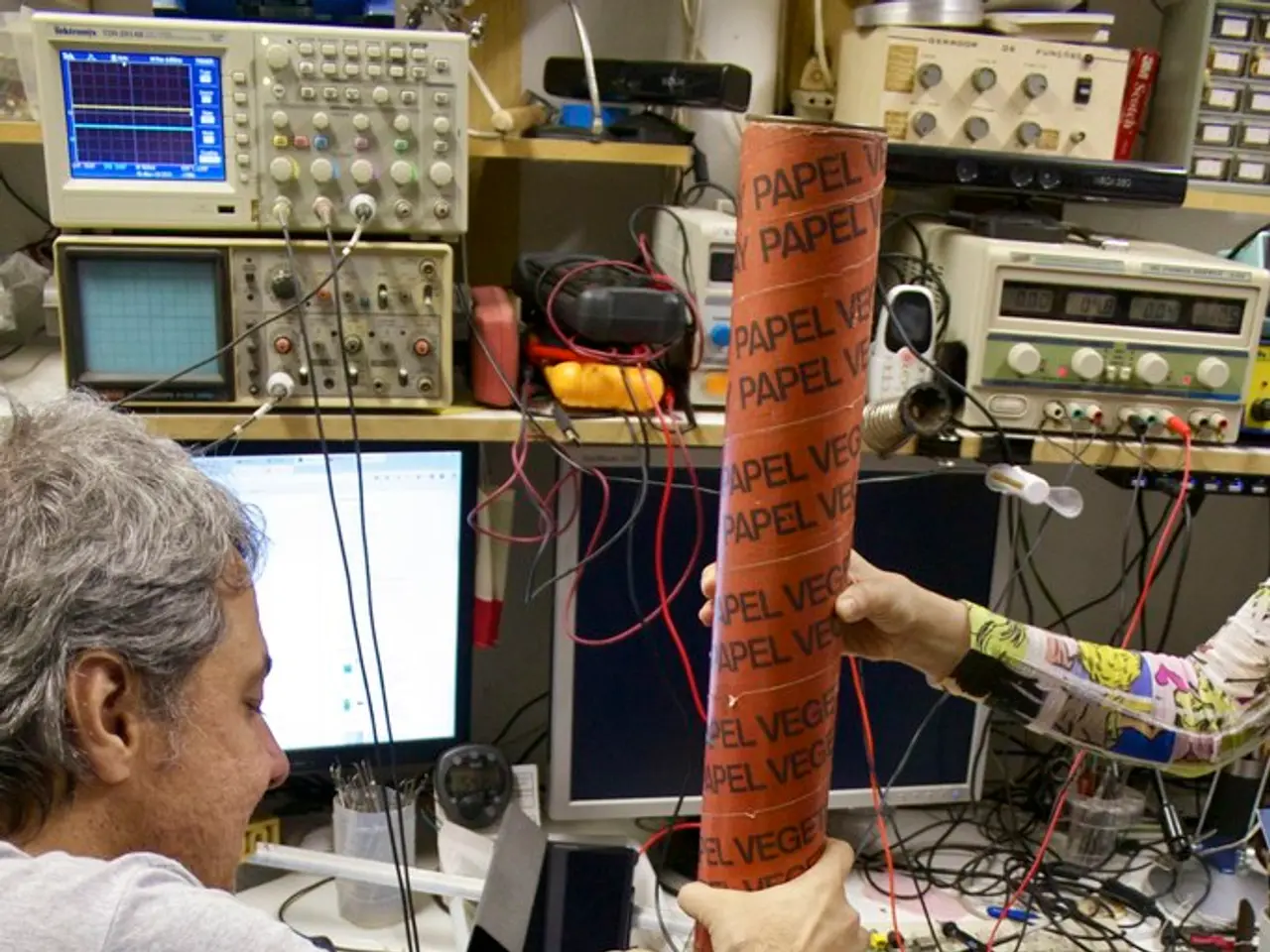Artificial intelligence mimics human brain processes for learning and memory retrieval
Taiwanese Researchers Develop Neuromorphic Device Mimicking Human Synaptic Plasticity
In a groundbreaking study, researchers from National Yang Ming Chiao Tung University have engineered a neuromorphic device that closely replicates human synaptic plasticity, opening up potential applications in advanced AI vision systems, medical diagnostics, and robotics.
The research, led by Professor Po-Tsun Liu from the Department of Photonics, focuses on the photonic synaptic transistor. This transistor emulates the learning and memory behaviors of human synapses, a key component in the brain's computing architecture.
The transistor achieves this by utilising a heterojunction of tungsten oxide and indium tungsten zinc oxide. This unique composition allows for multi-level synaptic weights to be modulated by different wavelengths of visible light and electrical stimuli, mimicking the brain’s data transfer and memory modulation mechanisms.
Moreover, the researchers developed a photonic synapse array capable of processing RGB signals in real time. This closely replicates the layered perception and storage functions of the human retina for image intensity and colour, enabling high accuracy in recognising even heavily distorted images. In testing, the WIST device-based model achieved an impressive 87.4% recognition accuracy for severely distorted handwritten digits.
Under Gaussian noise conditions, the recognition accuracy reached optimal levels, achieving 94.2%, 91.2%, and 91.4% for the R, G, and B schemes, respectively.
The findings highlight the robust performance and high accuracy of the proposed WIST synaptic devices in real-world colour perception scenarios. The simulation method used demonstrates the high potential of proposed WIST devices in advanced neuromorphic applications, such as smart medical diagnostics, self-driving vehicle visual modules, wearable devices, and biorobotics.
The research appeared in the May issue of the scientific journal Small. With its ability to emulate the human visual system, this neuromorphic device has the potential to revolutionise AI vision systems, medical diagnostics, and robotics by integrating biologically-inspired computing paradigms into semiconductor devices.
[1] Liu, P.-T., et al. (2023). Photonic Synaptic Transistor for Artificial Visual Perception Systems and Neurorobotics. Small, 19(20), 2300886.
[2] Liu, P.-T., et al. (2023). Photonic Synapse Array for Real-Time RGB Signal Processing. Applied Physics Letters, 122(18), 183701.
- This neuromorphic device, developed by Taiwanese researchers, could potentially be used in health-and-wellness sectors, as its ability to emulate human synaptic plasticity opens up avenues for self-driving vehicle visual modules, wearable devices, and smart medical diagnostics that leverage biologically-inspired computing paradigms.
- The breakthrough technology, with its photonic synapse array capable of processing RGB signals in real time, could greatly impact the medical-conditions field by enabling high accuracy in recognizing heavily distorted images, offering promising applications in robotic surgeries and advanced medical diagnostics.




